We were glad to leave down town Fort Lauderdale to set off under the Las Olas Boulevard Bascule Bridge after a few days. The sheer volume of people, boats, road traffic, chic shopping, waterfront bars and restaurants was quite overwhelming in Florida after so many weeks of glorious solitude and natural landscapes.
Leaving Las Olas Blvd Florida
The marker for that bridge was 1014.1 . Numbering started at 0 in Norfolk Virginia . The distance was measured in statute miles. Guided by our three charts books for the ICW we followed the Magenta line through twenty three bridges on that first day. Only three were fixed road bridges with a clearance of sixty five feet above water level. All the rest were single or double bascule bridges.
To keep Jethro occupied we enlisted his help in looking ahead for each marker.
“Jethro, please could you tick off each marker on the chart as we pass?” Jon asked.
This he did very methodically with a soft pencil.
Bridges open just for us
Some bridges opened at fixed times, others on demand. The procedure was to make VHF radio contact with the bridge operator or if he could not be seen to sound a horn with one long blast. Then he would acknowledge, stop the road traffic and open the bascule so we could pass through. Oliver enjoyed waving to operators and the waiting cars as we progressed, shouting and saluting:
“Thank you. Bye bye!” To the enclosed control box. He always got a wave back.
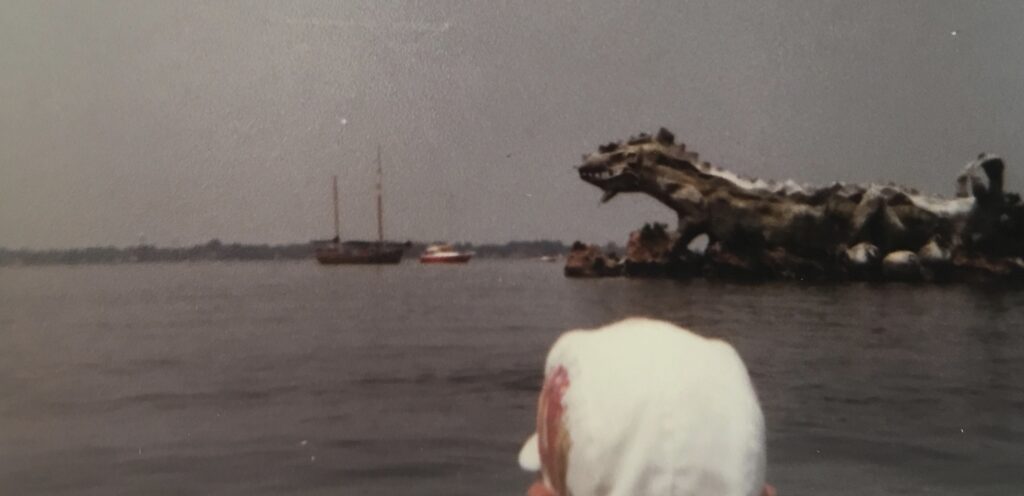
Returning to Camelot at anchor on the ICW, past the crocodile statue Merritt Island
Vessels with a following current had right of way in narrow passages. Dredging of the main channel was maintained by the US Army Corps of Engineers to a the depth at 12 feet- although we did touch bottom in a few places with our 6 foot draft. The fixed bridges had a clearance of 65 feet. The height of our topmast was 56 feet including the radio antenna. There was negligible rise and fall of tide in Florida.
North of Boynton Beach in Florida the waterway widened out between the barrier islands and the mainland so that in places the ICW was over half a mile across. There were massive new developments for miles on end. Excavations created waterfront building plots on the mainland side. Spectacular individual homes with docks were to be gawped at… and many high rise condominiums were under construction.

Occasionally we would see heavy commercial tugs pushing barges. The size of these was quite staggering.
Camelot covered fifty miles on the first day. Anchoring was free of charge. We dropped the hook well away from the main channel before nightfall near the Palm Beach Golf Club. We could hoist sails in the wider stretches, whereas it was all motoring through narrow cuts. Then we were so close to waterfront homes that we could see what people were eating and drinking on their patios. When that happened Oliver and Jethro waved and usually folks waved back.
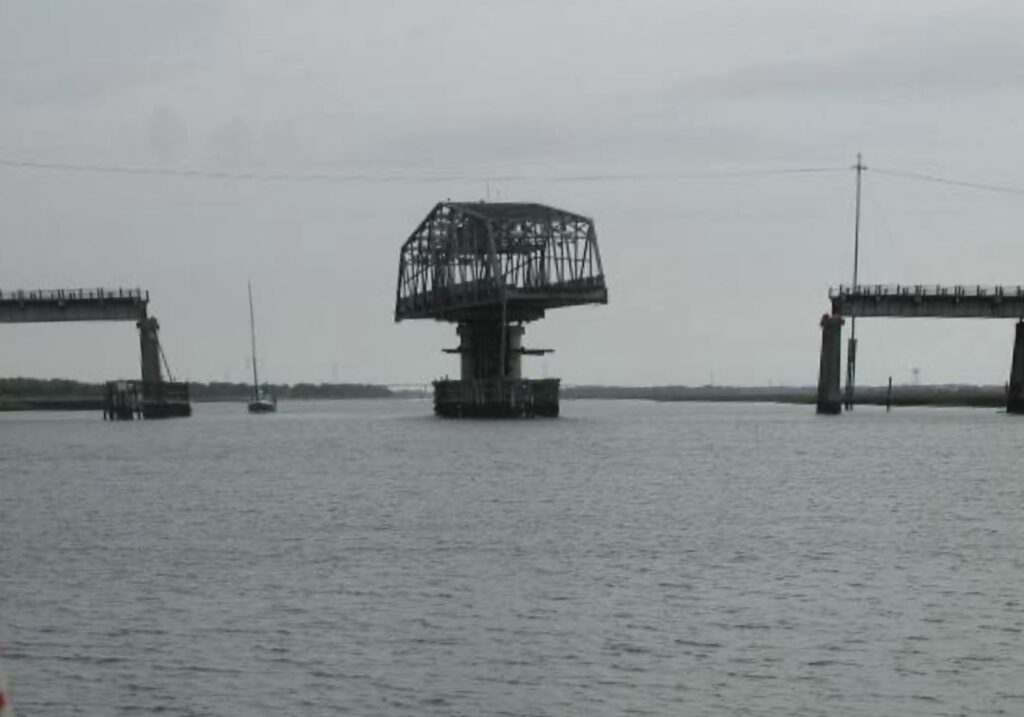
By the time we reached Daytona we needed to buy diesel. To do that we needed to get more funds cabled from home, which took a few days.
A bike instead of Disney World
Leaving Camelot at anchor we lowered the dinghy to go ashore where Jon telephoned his parents to make the banking arrangements. We walked to the beach with the boys for a paddle and swim in the Atlantic. On the way back we saw a garage sale and popped in to look. Jethro’s eyes lit up at the sight of a red dirt bike with wide tyres just the right size for him. It was priced at ten dollars.
“Oooh, Daddy. Can I buy that red bike?” he asked jumping with glee. “I have that much saved up.”
“Yes you can, but I’ll buy it for you, but that would be instead of going to Disney World.” said Jon.
“Yes please. I’d rather have a bike.” Jethro handed over a $10 bill to the mommy in the garage.
This resolved the dilemma about whether to make a bus trip to Orlando to our immense relief. So the days waiting for funds from the UK were spent teaching Jethro to ride a bike. Now aged six and a half he had not the opportunity to ride a two wheeled bike before, but he soon got the hang of it.
Once the transfer came through we filled the diesel tanks at only 99 cents a gallon. Fresh water was free.
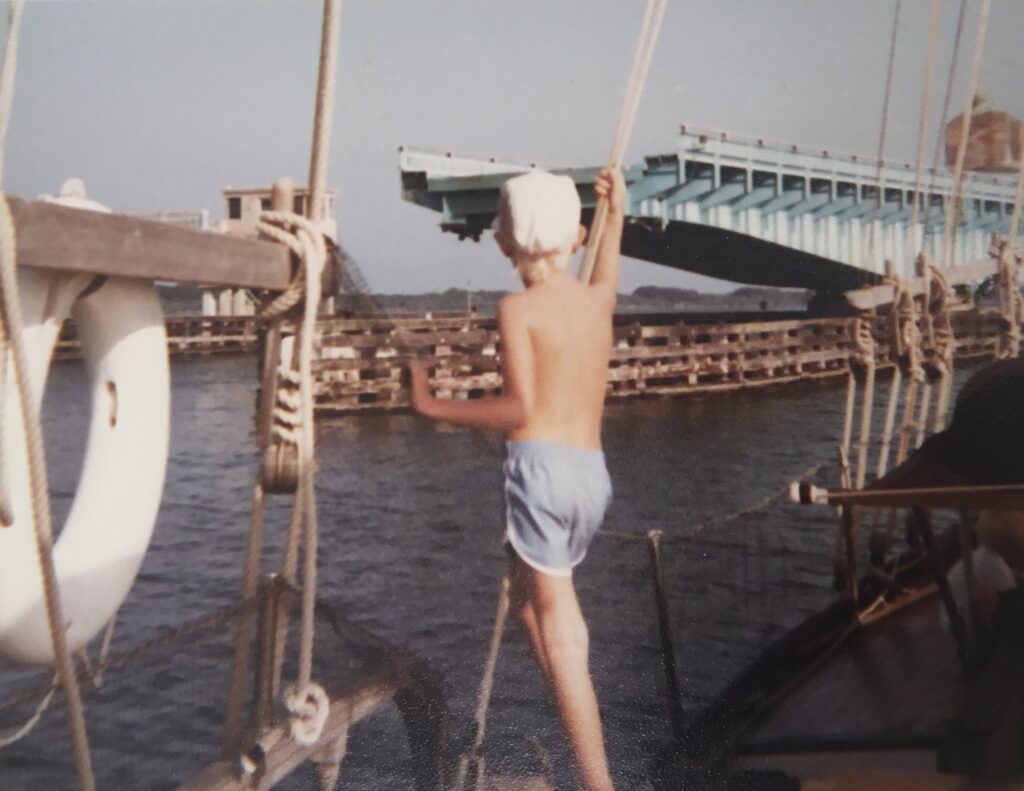
There was a lot of wildlife to see. Porpoises cavorted around our bows in the Indian River section. We did anchor to take the boys to the Cape Canaveral Space station for a day. Oliver was still too young to understand much but Jethro was very impressed. They came away with post cards to send home, souvenirs for a scrap book and packets of space candy.
Wildlife on the Intra Coastal Waterway
Manatees were spotted, or as some call them Sea Cows. The birdlife now we were away from the intensely built up regions was prolific. We saw herons, peregrine falcons, ospreys and bald headed eagles galore. There were hundreds of butterflies and dragon flies and of course hungry mosquitos. Our first alligator was seen one evening after we had anchored . It was about five feet long, and dead – floating on its back downstream.
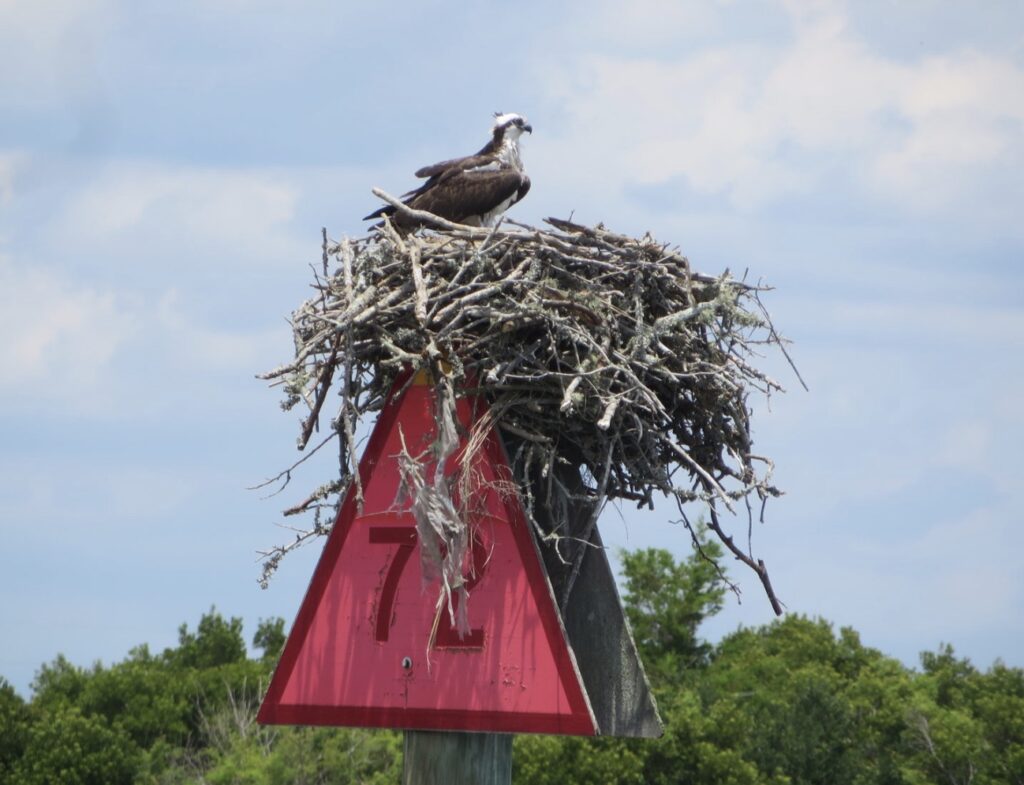
Florida into Georgia
We crossed from Florida to Georgia at the end of July. Manoeuvring Camelot into the Isle of Hope marina for one night whilst we all used shore showers and I did the laundry. Jethro could ride his bike and Oliver could run around. Early next morning after we had done the chores we stowed the bike back in the well deck and set off on a bus right to the city centre of Savannah.
With Olly in the push chair we admired the beautiful anti-Bellum houses with their verandahs and balconies. We noticed the ghostly Spanish moss hanging from trees. The highlight of this expedition was a visit to a splendid restaurant called The Pirate House.
Savannah, Georgia
Surrounded by animated and still models of pirates we sat down for a burger and fries meal. Drinks were served in skull mugs decorated with bendy straws and climbing monkeys. Every twenty minutes the walls went dark, thunder clapped and rain poured down the walls in some clever way. The boys were overjoyed by the whole experience and the food was good.
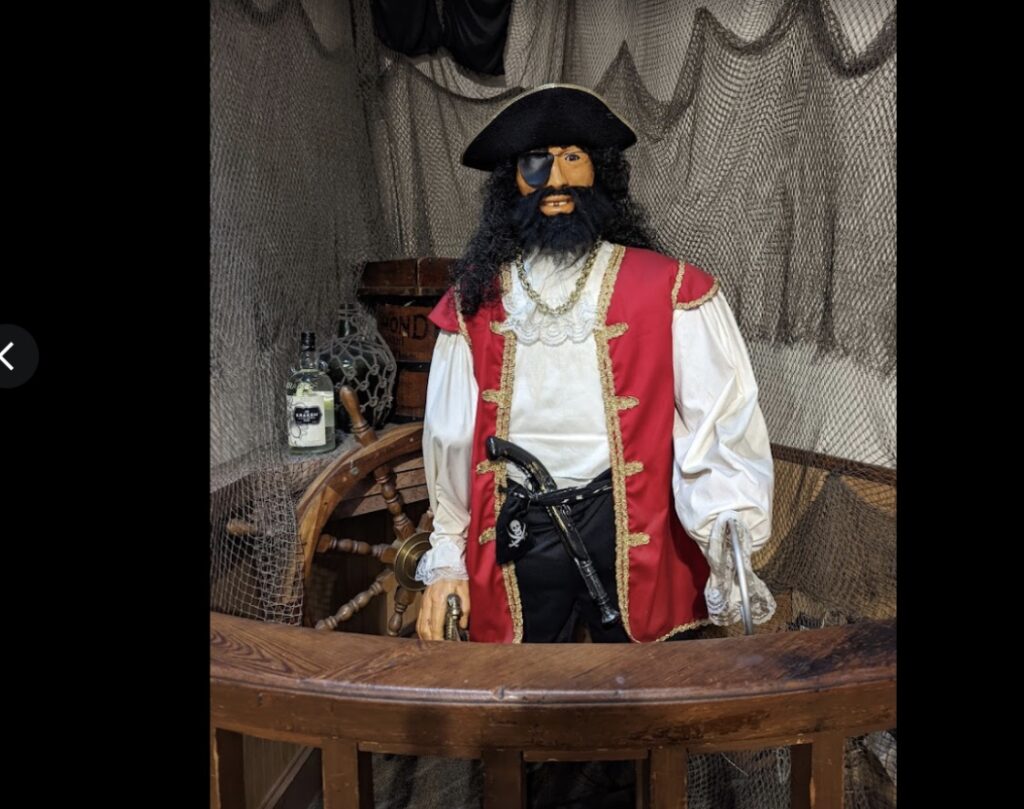
Edward Teach, the pirate Blackbeard, seemed to have a lot of connections in this part of the world and not only in Georgia but also in both Beaufort (pronounced B-you-fort) in South Carolina and in the other Beaufort (Boh fort) in North Carolina.